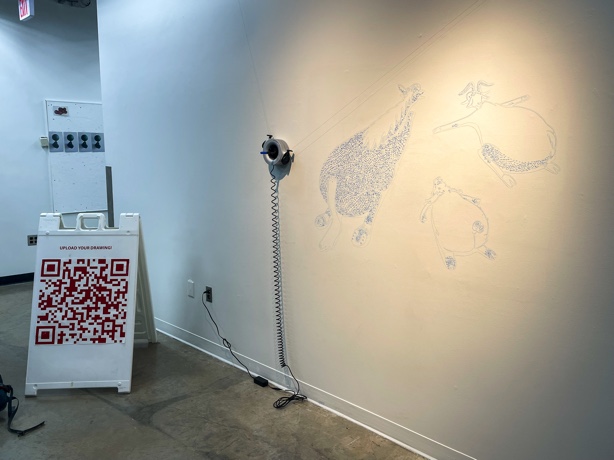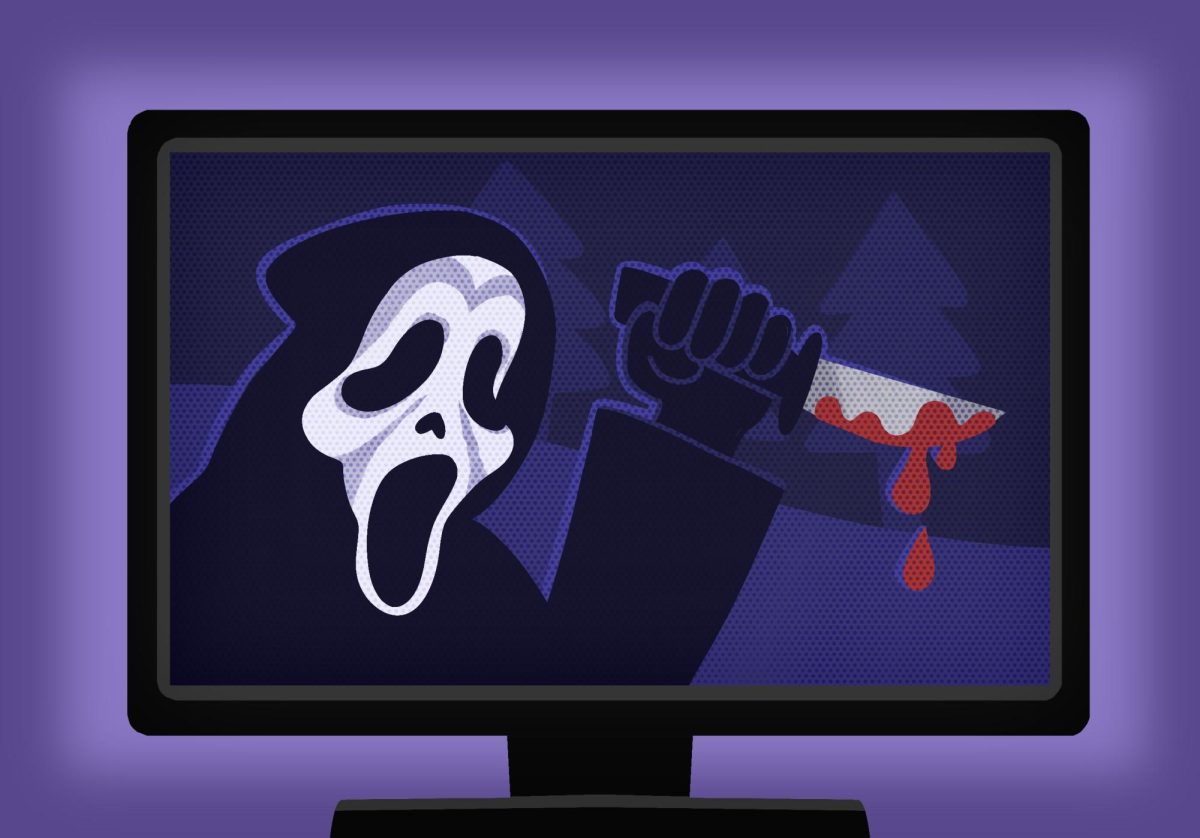Drawing on walls may have warranted a time-out in your youth, but the University of Minnesota’s eStudio, a collaborative arts technology learning space, has an installation that encourages it.
The participatory display centers on the Scribit, a device that automatically draws digital illustration files onto vertical spaces with mechanical precision – basically, a wall-drawing robot, as eStudio researchers affectionately call it.
The eStudio was created by Diane Willow, an associate professor of art at the University, who works to simplify the intersection of science, technology and art for students. The lab is open to students from all colleges, regardless of whether they major in an arts field, and encourages “peer-to-peer” learning, Willow said.
“It’s a place for exchanging ideas and also to share processes,” Willow said. “Not everyone knows everything, but together, people figure things out.”
Research assistants like Jamal Awadallah help newcomers learn how to properly operate the various machines that populate the eStudio. The Scribit is only one of them, though it is the newest, Awadallah said, adding that “it’s definitely the hot thing in the studio right now.”
“We’d been trying to find a way for people in the eStudio to collaborate on something public,” Willow said. “It also raises energy for the group and brings attention to the studio, and then people might drift in and try something that they haven’t tried before.”
The eStudio also offers use of an embroidery machine, 3D printers, vinyl cutters, drawing tablets and all sorts of other gadgets meant to aid in the creation of art.
“I definitely think there’s a playfulness to the studio and, like, a welcome-ness,” Awadallah said. “Some people come in here and they don’t even use the machines. They just do their own projects and hang out.”
The idea to put the Scribit out for display came from a literal blank wall, according to Awadallah. The empty space outside of the eStudio, on the second floor of the West building of the Regis Center for Art, was just begging to be filled.
Mira Swartz, another eStudio research assistant, had the idea to fabricate a giant vinyl QR code to display next to it, encouraging people to submit their own art and participate in the display.
The machine drew student-submitted designs on the walls of Regis from March 14 through 24, and will be actively doodling away inside the studio for the rest of the semester.
“It works all day, usually. If you do a drawing, it could take up to 15 hours,” Awadallah said, “So it’s kind of cool to have it always be moving while people are walking in and out of the building.”
To Willow and the research assistants at the eStudio, public access to art is essential. “The participation of people is what actually activates the work; it isn’t really fully realized until other people are a part of it,” Willow said.



















